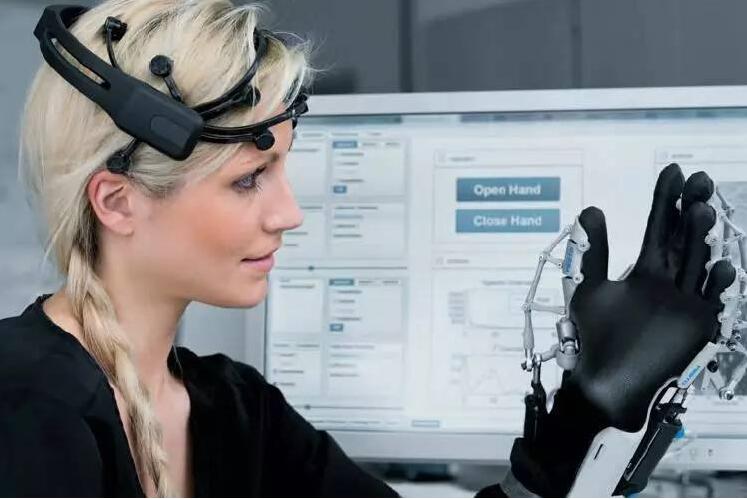Leaders
領導者
The next frontier
下一個前沿地帶
Brain-computer interfaces may change what it means to be human.
腦機接口可能改變成為人類的意義。
Technologies are often billed as transformative.
科學技術經常被譽為是翻天覆地的。
For William Kochevar, the term is justified.
對威廉·科其瓦而言,這個詞恰如其分。
Mr Kochevar is paralysed below the shoulders after a cycling accident, yet has managed to feed himself by his own hand.
在一次騎行事故后,科其瓦肩部以下癱瘓了。然而,他做到了用自己的手吃飯。
This remarkable feat is partly thanks to electrodes, implanted in his right arm, which stimulate muscles.
這一壯舉部分要感謝植入他右臂中的、刺激肌肉的各種電極。
But the real magic lies higher up.
但是,真正的魔力在更高之處。

Mr Kochevar can control his arm using the power of thought.
科其瓦能夠運用思維的力量控制他的手臂。
His intention to move is reflected in neural activity in his motor cortex; these signals are detected by implants in his brain and processed into commands to activate the electrodes in his arms.
他想要挪動的意圖在他的運動皮層的神經元活動中得到反映;這些信號被他大腦中的植入物探測到,被加工成各種命令,以激活他手臂中的電極。
An ability to decode thought in this way may sound like science fiction.
一種以這一方式解碼思維的能力,或許聽起來像是科幻小說。
But brain-computer interfaces (BCIs) like the BrainGate system used by Mr Kochevar provide evidence that mind-control can work.
但是,像被科其瓦所使用的BrainGate系統這樣的人腦—計算機接口(BCI)提供的是思想控制行得通的證據。
Researchers are able to tell what words and images people have heard and seen from neural activity alone.
僅僅是從神經元的活動,研究人員就能夠辨識人們聽到的是什么詞語,看到的是什么圖像。
Information can also be encoded and used to stimulate the brain.
信息也可以被轉換為計算機語言,并被用來刺激大腦。
Over 300,000 people have cochlear implants, which help them to hear by converting sound into electrical signals and sending them into the brain.
超過300000人擁有耳蝸植入物,通過把聲音轉換為電波并將其傳送給大腦,這種植入物幫助人們聽聲辨音。
Scientists have “injected” data into monkeys' heads, instructing them to perform actions via electrical pulses.
科學家已經把數據“注入”猴子的大腦,通過電脈沖指導它們做各種動作。
譯文來源考研英語時事閱讀











